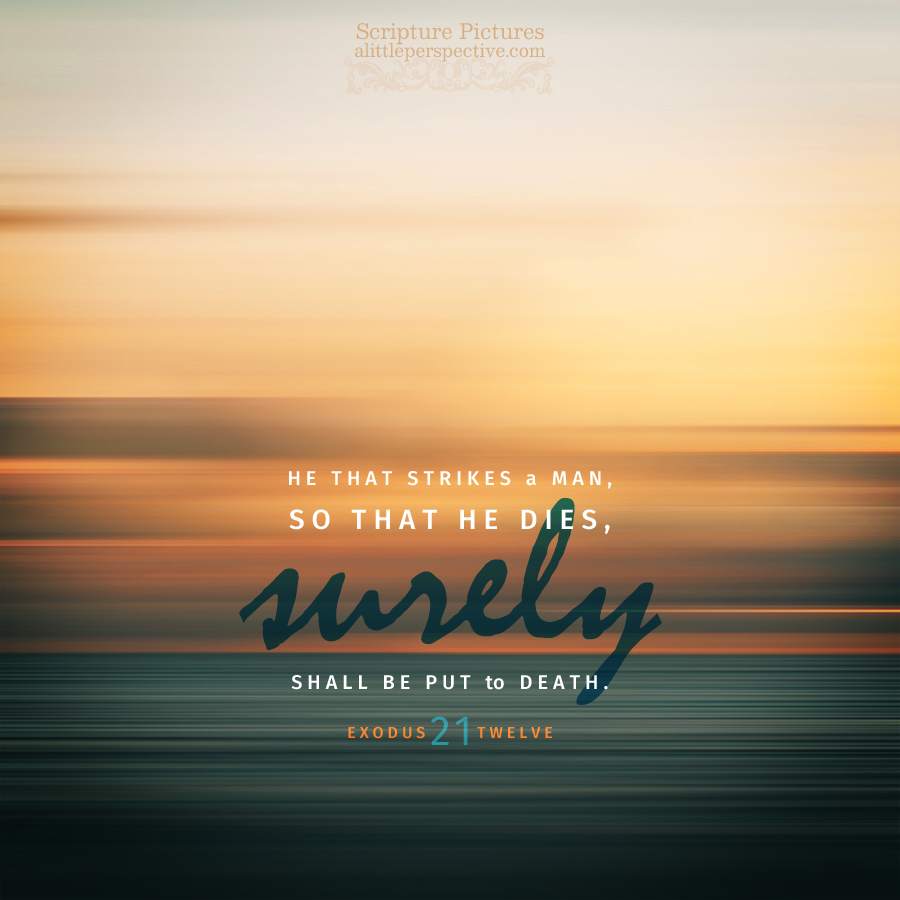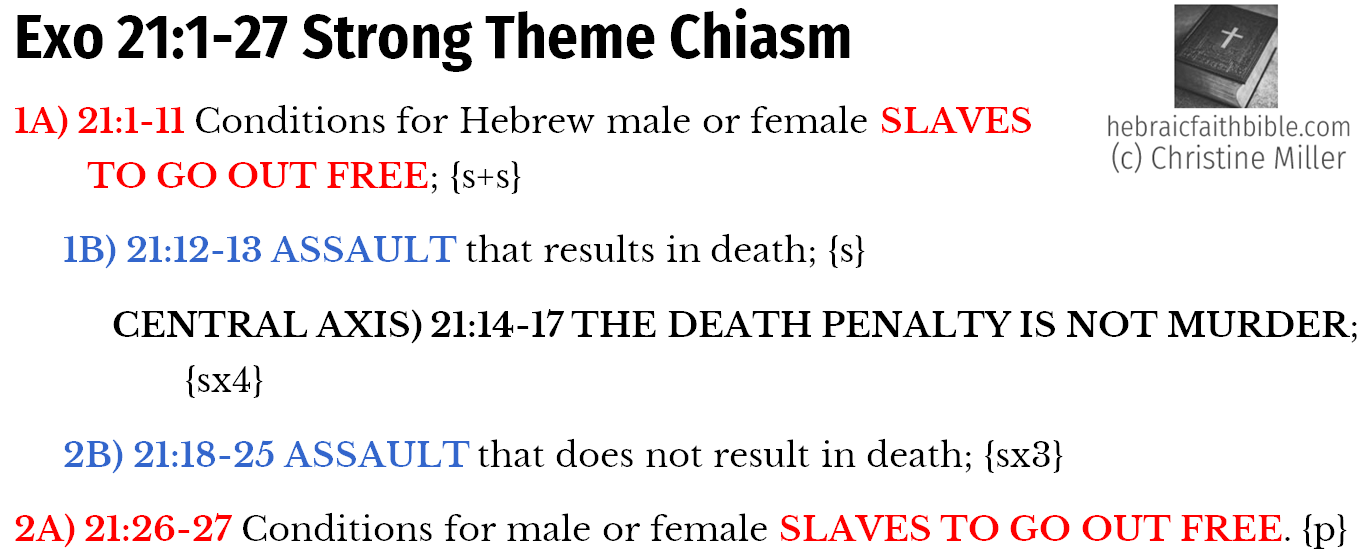Read Exodus 21 here or at Bible Gateway.
The Hebrew paragraphs:
21:1-6 {s} Conditions for a Hebrew male slave to go out free
21:7-11 {s} Conditions for a Hebrew female slave to go out free
21:12-13 {s} Manslaughter is not murder
21:14 {s} Murder receives the death penalty
21:15 {s} Striking father or mother receives the death penalty
21:16 {s} Kidnapping receives the death penalty
21:17 {s} Cursing father or mother receives the death penalty
21:18-19 {s} Assault of a neighbor when he does not die
21:20-21 {s} Assault of a male or female slave when he does or does not die
21:22-25 {s} Assault of a woman with child when the child does or does not die
21:26-27 {p} Conditions for male or female slaves to go out free
21:28-32 {s} Restitution when an ox gores a person to death
21:33-34 {s} Restitution when a pit causes the death of an animal
21:35-36 {s} Restitution when an ox causes the death of an animal
21:1-27 {sx10+p} Strong Theme: Restitution in cases of slavery, or when a person causes injury or death (‘You shall not commit murder’)
While the majority of the this Strong Theme has to do with what constitutes murder, it opens and closes with conditions in which a slave goes free. But why include something that obviously does not have to do with death, within a theme which obviously has to do with death?
We have already seen in Torah that slavery is a metaphor for death. Slavery ends the life previously known, so it is a type of death. When Joseph was sold into slavery in Egypt, he became a type of Messiah going to his death, only to be raised up to life (freedom) again, providing life for everyone else through it. This single strong theme which explains death, and imposes death, is “swallowed up” by its opening and closing paragraphs of slaves going out free. Death swallowed up in freedom, that is to say, life!
If there are questions, these are good resources:
The Law of Love: The Gospel of Grace Revealed in the Commandments of God – Christine Miller
Exodus in Chiastic Structure – Christine Miller


















Leave a Reply